Features of watering tomato seedlings
Content
Watering frequency
Each period of development of tomato seedlings requires different care and watering. The following describes how often to water tomato seedlings after a dive and sprouted seedlings.
Seyantsev
For the first time after sowing, it is necessary to replenish the soil with moisture in 2-3 days from the moment of mass shoots of the vegetable. This is especially necessary if the top layer is dry. Spraying does not threaten tender nightshades, so it is recommended to do it. But remember that excess moisture should not get on the seedlings.
In the following days, the moistening of the soil mass in the box with seedlings should be carried out when the earth dries up. Withstand the measure: do not flood the culture, but also do not let the soil dry out. These vegetables are susceptible to regimen. Fertilizing irrigation using substances that stimulate growth and development can be done no more than once a month.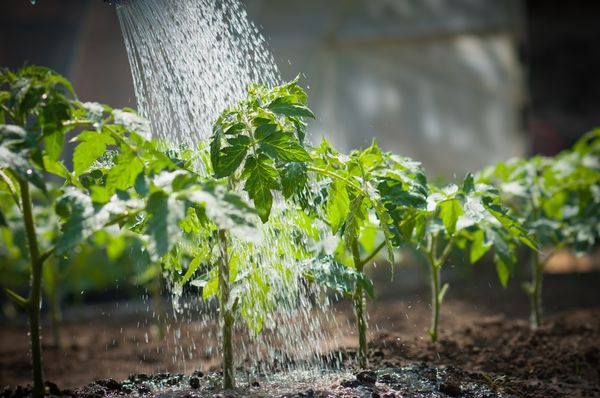
When the time comes for picking, you need to feed the soil mass in a day or two so that it dries slightly and is crumbly. Remember that in boxes, cassettes or pots in which tomatoes are planted, there must be drainage holes at the bottom where excess liquid would drain.
After the pick
You should not do watering of tomato seedlings after diving for 4-5 days. Further, the water replenishment regime depends on the age of the dived crops, the size of the bush: about once a week or 10 days. As vegetables grow, they will absorb more water. To avoid mistakes, you need to monitor the condition of the plants and the surface of the garden or greenhouse.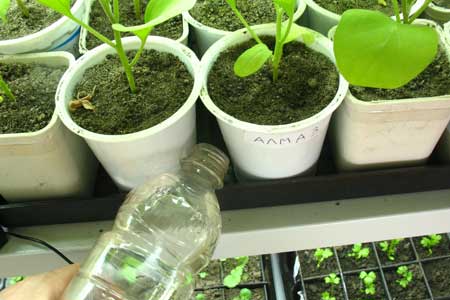
After picking, the soil for tomatoes can be moistened from the pallet. The result of this method will be the emergence of a branched and powerful root system, since the roots will stretch downward for water.
Before planting tomatoes in a greenhouse or in a vegetable garden, that is, in a permanent place, you need to water the tomato seedlings abundantly. This ensures that the integrity of the roots is maintained when digging up.
In the open field
The main rule of how to water tomato seedlings after planting in a fixed place is to prevent the gulf. Excess moisture in the soil mass, as in the air, contributes to the development of diseases, especially late blight. The disembarkation needs to be moistened when landing in a permanent place. Then the plants remain without water for 2-3 weeks, regardless of weather conditions. When this period has passed, you need to moisten the soil under the root, avoiding the ingress of liquid on the leaves. Then watering the tomato seedlings should be carried out between the rows. When fruits appear, tomatoes should be watered over the entire surface of the earth. Stick to this pattern: it is due to the growth and increase in the root system of tomatoes, which covers a large area every day.
How often to water tomato seedlings? Perform this procedure in the early morning or after sunset. Avoid irrigating nightshades when the sun is intense, and keep the leaves free of contamination, as they do not allow heat from the sun to pass through well.
It will be useful to loosen the soil under the tomatoes - this will help the roots absorb moisture better. The vegetable does not tolerate frequent flooding with cold water - its temperature should be at least 23 degrees Celsius. Gardeners often resort to moistening with a water supply hose, but the harm is obvious: the acid balance is disturbed and the root system is damaged. Rainwater is ideal for tomatoes because its chemical composition nourishes plants, accelerates their growth and increases yields.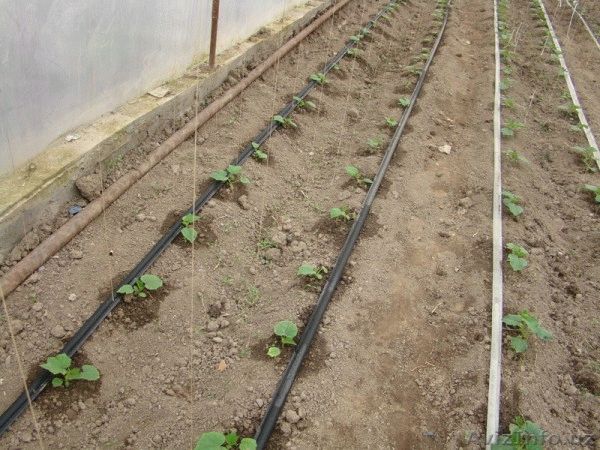
How to determine sufficient watering
To determine when to water the tomato seedlings, you need to knock on the container in which they are planted - if the ground is dry there, the sound will turn out to be ringing, and with wet soil the wall of the pot will sound dull.
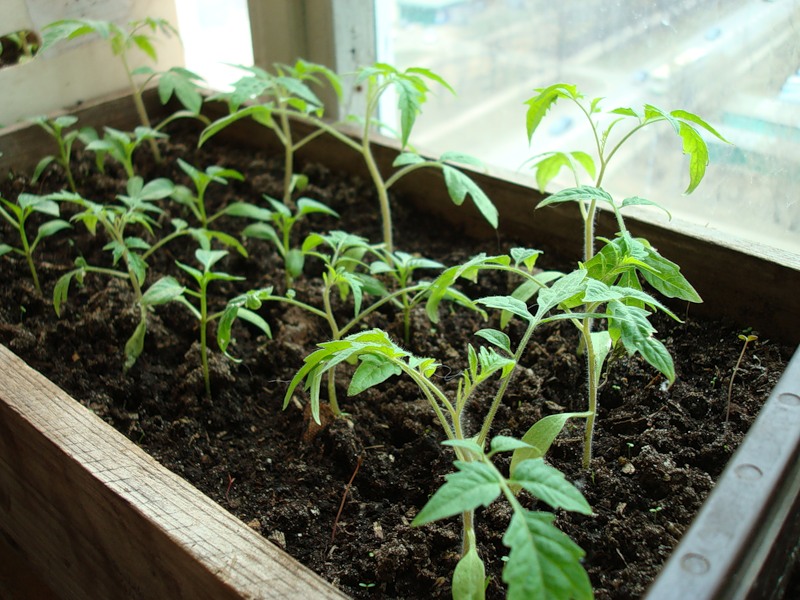 You can pierce the soil with a stick or try it with your finger at the edge of the pot. Many gardeners are accustomed to determining moisture "by eye". If the soil is dull or pale brown, then it is necessary to moisten it, when the color is dark brown, then there is enough liquid. This method does not always work: the top layer can be dried, and the middle and bottom ones can be moist. There is a danger of pouring tomatoes and causing disease.
You can pierce the soil with a stick or try it with your finger at the edge of the pot. Many gardeners are accustomed to determining moisture "by eye". If the soil is dull or pale brown, then it is necessary to moisten it, when the color is dark brown, then there is enough liquid. This method does not always work: the top layer can be dried, and the middle and bottom ones can be moist. There is a danger of pouring tomatoes and causing disease.
There is such a rough way - you need to raise the pot. Dry soil will weigh less than wet soil. The first signal of a moisture deficit in the garden or in the greenhouse is withered and darkened lower leaves of tomatoes in hot weather.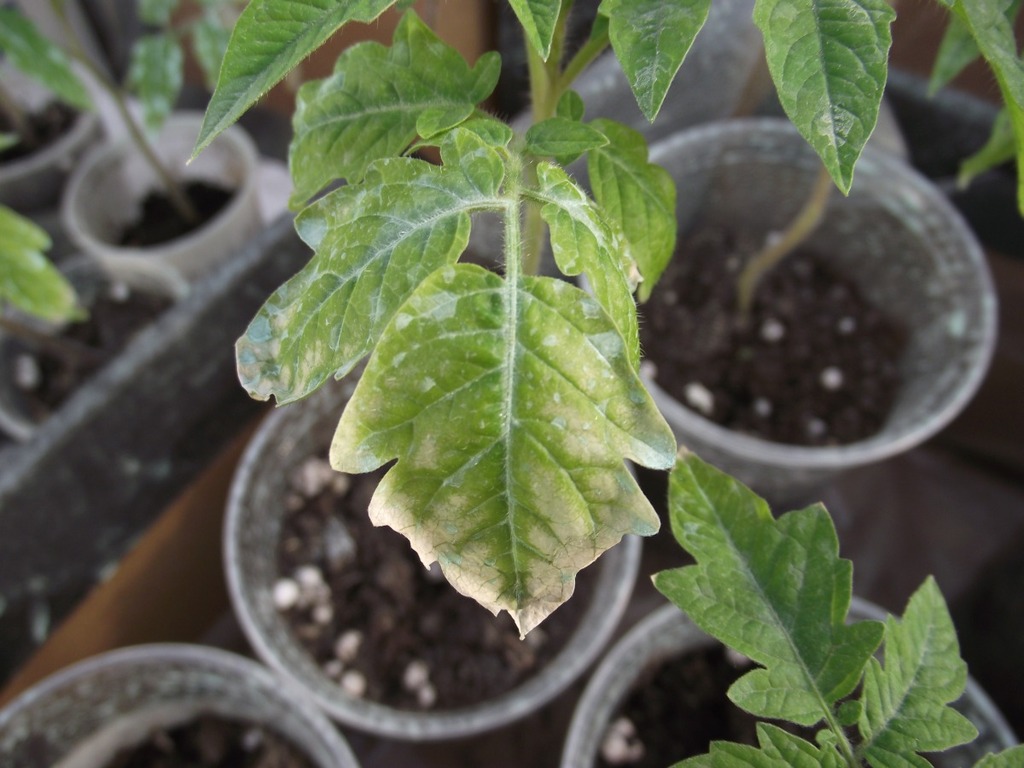 It is impossible to give a specific recommendation on the amount of water required to moisten the earth. The gardener must experimentally determine this value, because it depends on the ability of the soil mass to retain water, weather, the age of tomatoes and their height, mulching. It is generally recommended to spend 3-5 liters of liquid per plant. The main rule is that the soil should be moistened at a depth of 9-12 cm, the same for all bushes.
It is impossible to give a specific recommendation on the amount of water required to moisten the earth. The gardener must experimentally determine this value, because it depends on the ability of the soil mass to retain water, weather, the age of tomatoes and their height, mulching. It is generally recommended to spend 3-5 liters of liquid per plant. The main rule is that the soil should be moistened at a depth of 9-12 cm, the same for all bushes.
The ideal moisture content for seedlings is 85-90%. There is such a way to determine if tomatoes are getting enough water: you need to take a handful of soil from a garden at a depth of 10 cm and squeeze it into a lump. If it has formed, and the earth easily crumbled, then the plants are getting enough liquid.
Video "How to water tomato seedlings?"
A video about how often and how you need to water tomato seedlings.
